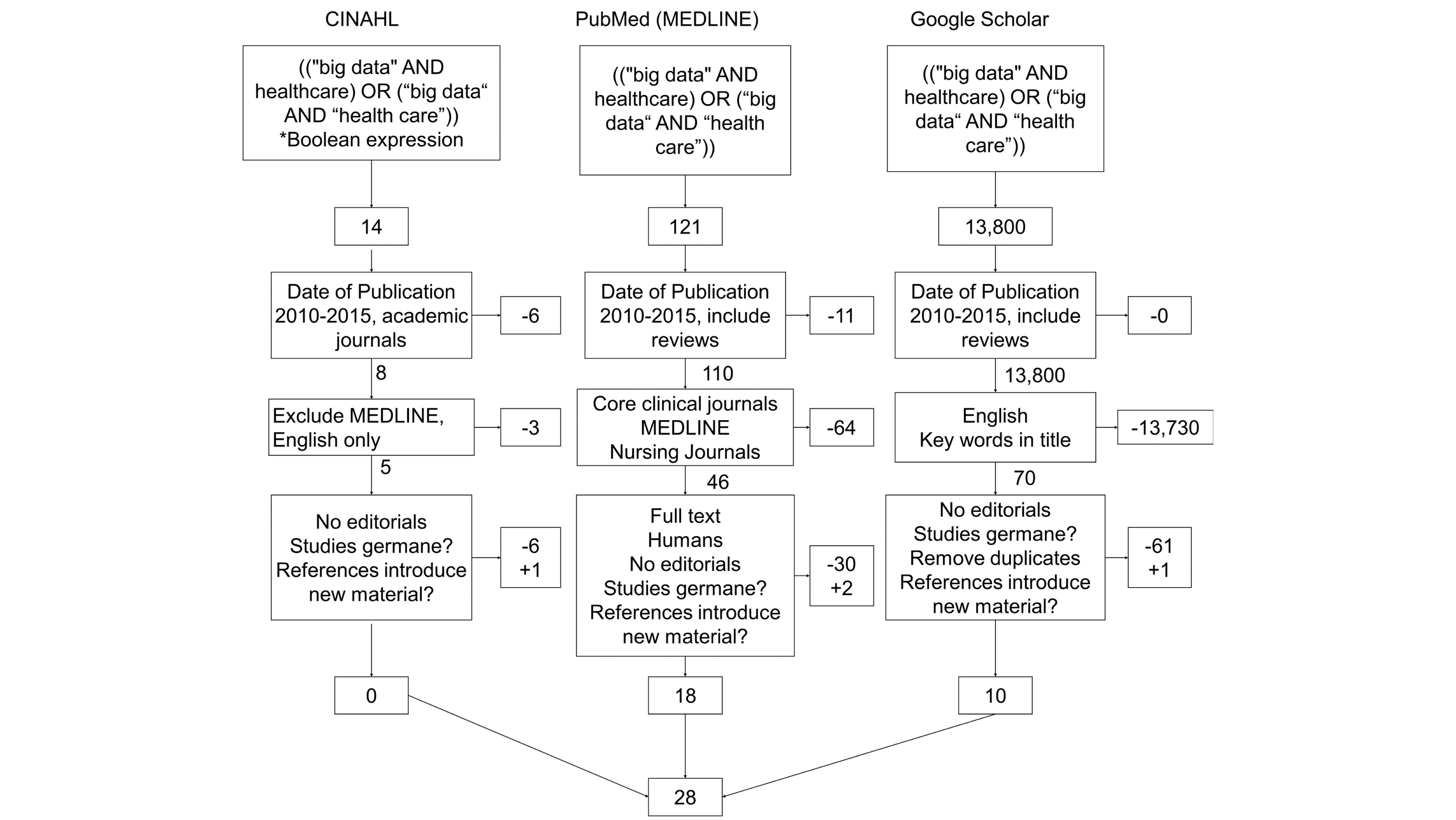Difference between revisions of "Template:Article of the week"
Shawndouglas (talk | contribs) (Updated article of the week text.) |
Shawndouglas (talk | contribs) (Updated article of the week text.) |
||
| Line 1: | Line 1: | ||
<div style="float: left; margin: 0.5em 0.9em 0.4em 0em;">[[File:Fig1 | <div style="float: left; margin: 0.5em 0.9em 0.4em 0em;">[[File:Fig1 Kruse JMIRMedInfo2016 4-4.png|240px]]</div> | ||
'''"[[Journal: | '''"[[Journal:Challenges and opportunities of big data in health care: A systematic review|Challenges and opportunities of big data in health care: A systematic review]]"''' | ||
Big data analytics offers promise in many business sectors, and health care is looking at big data to provide answers to many age-related issues, particularly dementia and chronic disease management. The purpose of this review was to summarize the challenges faced by big data analytics and the opportunities that big data opens in health care. A total of three searches were performed for publications between January 1, 2010 and January 1, 2016 (PubMed/MEDLINE, CINAHL, and Google Scholar), and an assessment was made on content germane to big data in health care. From the results of the searches in research databases and Google Scholar (N=28), the authors summarized content and identified nine and 14 themes under the categories "Challenges" and "Opportunities," respectively. We rank-ordered and analyzed the themes based on the frequency of occurrence. ('''[[Journal:Challenges and opportunities of big data in health care: A systematic review|Full article...]]''')<br /> | |||
<br /> | <br /> | ||
''Recently featured'': | ''Recently featured'': | ||
: ▪ [[Journal:The impact of electronic health record (EHR) interoperability on immunization information system (IIS) data quality|The impact of electronic health record (EHR) interoperability on immunization information system (IIS) data quality]] | |||
: ▪ [[Journal:Bioinformatics workflow for clinical whole genome sequencing at Partners HealthCare Personalized Medicine|Bioinformatics workflow for clinical whole genome sequencing at Partners HealthCare Personalized Medicine]] | : ▪ [[Journal:Bioinformatics workflow for clinical whole genome sequencing at Partners HealthCare Personalized Medicine|Bioinformatics workflow for clinical whole genome sequencing at Partners HealthCare Personalized Medicine]] | ||
: ▪ [[Journal:Pathology report data extraction from relational database using R, with extraction from reports on melanoma of skin as an example|Pathology report data extraction from relational database using R, with extraction from reports on melanoma of skin as an example]] | : ▪ [[Journal:Pathology report data extraction from relational database using R, with extraction from reports on melanoma of skin as an example|Pathology report data extraction from relational database using R, with extraction from reports on melanoma of skin as an example]] | ||
Revision as of 19:57, 13 February 2017
"Challenges and opportunities of big data in health care: A systematic review"
Big data analytics offers promise in many business sectors, and health care is looking at big data to provide answers to many age-related issues, particularly dementia and chronic disease management. The purpose of this review was to summarize the challenges faced by big data analytics and the opportunities that big data opens in health care. A total of three searches were performed for publications between January 1, 2010 and January 1, 2016 (PubMed/MEDLINE, CINAHL, and Google Scholar), and an assessment was made on content germane to big data in health care. From the results of the searches in research databases and Google Scholar (N=28), the authors summarized content and identified nine and 14 themes under the categories "Challenges" and "Opportunities," respectively. We rank-ordered and analyzed the themes based on the frequency of occurrence. (Full article...)
Recently featured:
- ▪ The impact of electronic health record (EHR) interoperability on immunization information system (IIS) data quality
- ▪ Bioinformatics workflow for clinical whole genome sequencing at Partners HealthCare Personalized Medicine
- ▪ Pathology report data extraction from relational database using R, with extraction from reports on melanoma of skin as an example










